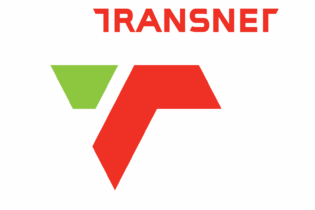Some just talk while others get on and do. This is the story of one that does.
DHL, an international courier company, recently opened the doors of its new logistics facility in Midrand. On the face of it there was nothing too significant about this event other than appreciating that it will enable them to achieve greater levels of efficiency which, no doubt in the courier business, is all important. However, after listening to their MD, Michael Druce, say a few words, it became clear that they had in fact achieved somewhat more than the obvious process efficiencies of quicker turnaround times. Their fleet of 15 VW Caddy panel vans had been converted to run on either petrol or compressed natural gas (CNG) as an alternative to petrol. And, to alternate between the two fuels, all that is necessary is a flick of a switch. Natural gas vehicles (NGVs) that use compressed natural gas (CNG) or liquefied natural gas (LNG), as a clean alternative to traditional fossil fuels are not new. Worldwide, there were 12.7 million NGVs by the end of 2010.Existing petrol or diesel engines may be converted to use of CNG or LPG. An increasing number of vehicles worldwide are being manufactured to run on CNG, including some of the major vehicle brands – VW being one. As a leading British motor group says, there’s not much the Caddy can’t shift. The powerful 104PS TDI PD engine, with 250 Nm of torque, is designed to take the strain and get things moving. So you can benefit from the Caddy van’s generous 724 kg payload, or its trailer weight of up to 1.,425 kg. Even when fully loaded, the Caddy is well balanced and never feels out of control. With front and rear anti-roll bars, supple suspension and car-like handling, the Caddy takes every road surface in its stride, ensuring that both load and driver always arrive safely. The Caddy is designed to more than measure up to your expectations. Packed with practicality, the load compartment combines versatile access with masses of load space. In line with DHL’s target to improve its carbon efficiency by 30%, by 2020, the company has chosen to go the VW Caddy, CNG route. It is expected that their fleet of NGVs will reduce carbon emissions by at least 30 to 35%, perhaps more.
CNG is much cleaner-burning than petrol or diesel. According to the US Environmental Protection Agency, CNG can reduce carbon-monoxide emissions by 90 to 97% and nitrogen-oxide emissions by 35 to 60% when compared with petrol and/or diesel. CNG can also potentially reduce non-methane hydrocarbon emissions by 50 to 75%, while producing fewer carcinogenic pollutants and little or no particulate matter.
And, the cherry on the top is that CNG is cheaper to buy than petrol or diesel. One 2007 study in the United States found that natural gas deposits are sufficient to supply 118 years’ of U.S. demand at 2007 levels. Natural gas is similarly abundant around the world. Essentially, it is as abundant as oil was 50 years ago, primarily because it has not yet been exploited on a large scale. Such abundance means that it is likely to cost much less than oil. “The NGV industry is mature and commercially viable in many countries. More than 50 vehicle manufacturers are now producing factory-built, natural gas vehicles,” says the International Association of Natural Gas Vehicles’ secretary-general, Dr Garth Harris.” Seems like it is the way to go.






